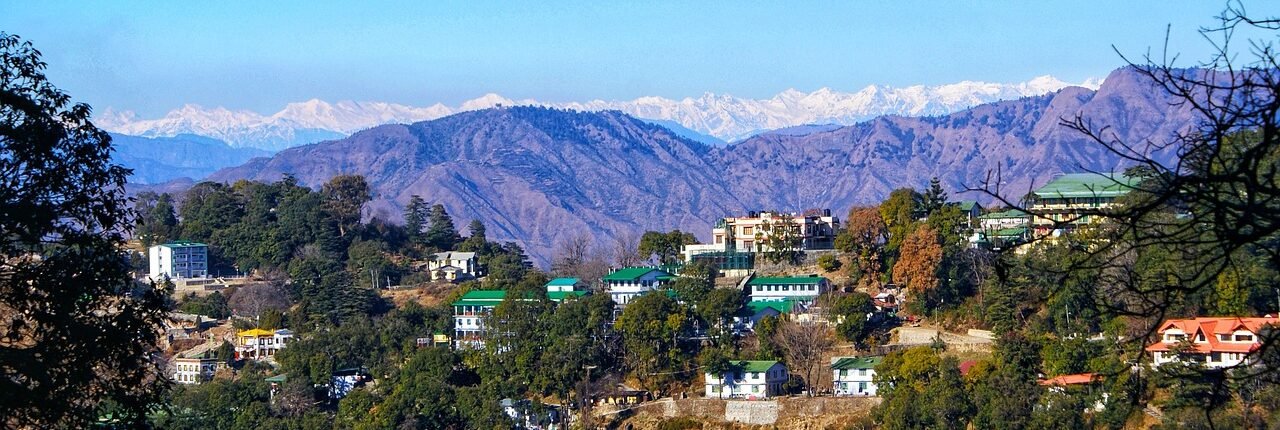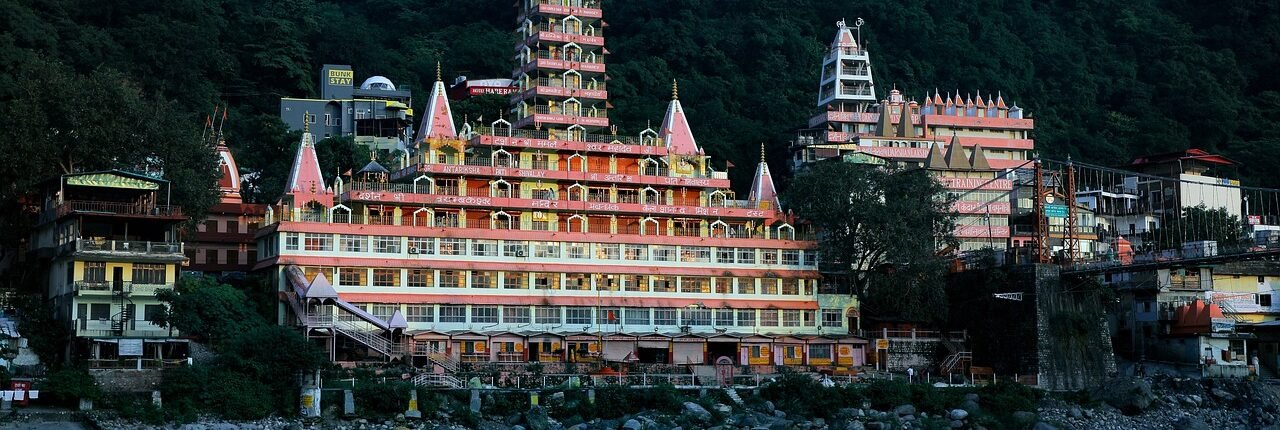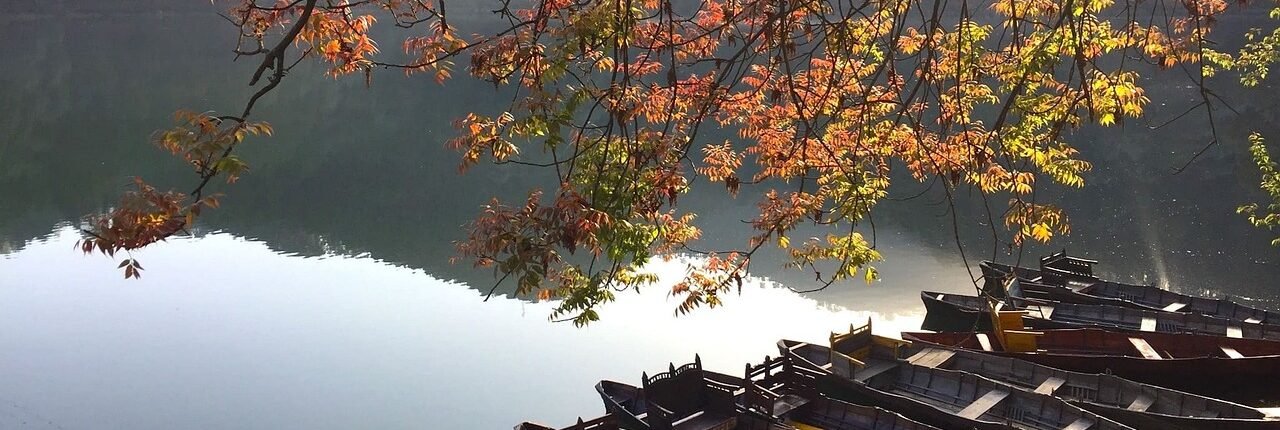BEST PLACES TO VISIT IN MONSOON IN INDIA
Whenever there is talk of traveling in the rainy season, the answer of most of us is no, but the real fun of some places lies in the monsoon itself and there are many beautiful places in our country which can be visited in the rainy season and whenever you go there, the beautiful views and weather will welcome you to please and greet.
Here, we are going to tell you about many places where you will enjoy visiting in the rainy season as much as in any other season. So, let us tell you about those places which will make your upcoming family vacation memorable because some places in India almost turn into heaven during the monsoon season.
From greenery to waterfalls, seas, mountains, rivers, lakes and deserts, everything becomes very beautiful and attractive. So, let us tell you how you can visit the most beautiful monsoon destinations in India with your family.
1. Goa – Goa
A popular beach destination looks beautiful and pleasant during Monsoon season as weather remains between 28-32°C. Goa is known for its beaches, happening clubs and landscaping with coconut trees. Enjoy the sand, Beach and picturesque sceneries of Sea and coconut trees. Goan local delicacies, seafood and drinks add an extra essence to make your vacation a memorable one.
Places to visit: North and South Goa Beaches,Aguada Fort, Chapora Fort, Basilica of Bom Jesus, Dudhsagar Falls etc.
Experiences: Mandovi River Sunset Cruise, Water activities (Jet Skiing, Scuba Etc.) and Clubs
Local Specialities: Feni a local drink made of Cheshew Nuts
How to Reach: Goa has an international airport in Dabolim and also connected with Madgaon & Vasco-Da-Gama railway stations.
2. Lonavala – Maharashtra
Lonavala is an ideal place to visit in India which is located at the Western Ghats of Maharashtra. The average temperature during monsoon is apx. 22-27℃ and weather is pleasant. It is on one of the preferred Monsoon destination out of our list. Whether you are from Mahrasthra of other part of the country here it could be the best places to visit in India during the rainy season. Enjoy and visit the Sahyadri Mountains ranges and the Ghats revive with beautiful scenic views, greenery, waterfalls and a pleasant climate to give an essence to your Monsoon holidays. Take a breath away from the bustling cities to pack your bags for a trip to the beautiful hill town named as Lonavala.
Places to visit: Tiger Point, Bhushi Dam, Karla caves built by the Buddhist monks, The Tungarli Lake, Tikona Fort some adventure activities and many more….
Experiences: Trekking, Camping, Horse Ridding and Sightseen to above mention points. City tour and shopping some local handicrafts
Local Specialities: Wooden handicrafts
How to Reach: Nearest Cities are Mumbai and Pune and it’s approximately 85kms (2Hours) away from Mumbai and 65 Kms (1Hour and 30 minutes) from Pune by road. Lonavala railway station is nearest railway station regular trains running on this route. Nearest airport is Mumbai at a distance of approximately 90kms
WILDLIFE SAFARI IN RANTHAMBHORE
Jungle Safari offers you to explore the wildlife in Ranthambore National and can be done by two modes, Jeep and Canter Safari. Only two safaris are allowed for a specified time period and tourists are allowed with a trained and expert guide along with authorized vehicles. Safari routes are fixed for the jeep and canter safari within the appointed time and duration. Limited numbers of vehicles are allowed to enter the park as per guideline.
Jeep Safari: One jeep can accommodate maximum 6 at a time and an individual can also hire a jeep with a cap of 6 heads. Tourist should obey all the guidelines of authorities and the instructions of guide during the safari. One can capture the images of Jungle, wildlife and other species with their cameras to keep the memories of the visit.
Canter Safari: Canters safari is recommended for large groups, and it can accommodate maximum 20 Persons at a time. During the safari tourist can see grassland of forest areas, water bodies and mountains within the park. During the safari you can experience the wildlife and witness the hunting by tiger at the ruins of Ranthambore.
SAFARI TIMINGS RANTHAMBORE NATIONAL PARK
Park can be visited twice in a day as two trips are conducted every day as per guideline of authorities. The safari timings are changeable with the seasons keeping in mind for the convenience of the tourists.
| MONTHS | MORNING SAFARI | EVENING SAFARI |
| October | 7.00 AM to 10.30 AM | 2.30 PM to 6.00 PM |
| Nov – Jan | 7.00 AM to 10.30 AM | 2.00 PM to 5.30 PM |
| Feb – March | 6.30 AM to 10.00 AM | 2.30 PM to 6.00 PM |
| April – May | 6.00 AM to 9.30 AM | 3.00 PM to 6.30 PM |
| June | 6.00 AM to 9.30 AM | 3.30 PM to 7.00 PM |
Please Note: Safari timings and details are subject to change by Govt. Authorities
PLACES TO VISIT AND ACTIVITIES
Ranthambore National Park: Visit this wildlife park to spot the wild animals, birds and other species of flora and fauna. Aravali and Vindhya ranges create a scenic view and offer you an opportunity to collect a lifetime memory of this region.
Ranthambore Fort: It is a majestic fort located 5 km inside the Ranthamore National Park and declared as world heritage site by UNESCO. It was built by Rao Hammir Deo Chauhan and located over a hill showing the royalty of Chauhan dynasty. Trinetra Ganesh Temple located inside the fort is another attraction of the fort and an oldest temple of Rajasthan.
Surwal Lake: This is a seasonal lake which dried out in summer, so one should prefer to visit in Monsoon or winters. You can see some species of birds in and around the lake during winters.
Padam Lake: This is the largest lake of Ranthambore and main source of water for animals and birds inside the jungle. Padam word is referred to Flower and the Lake gets its name because of lily flowers you can see during season.
Malik Talao: This is the smallest lake in Ranthambore region and a destination of many species of migrated birds. You can also see the crocodile in the lake and advised to see this from a safe distance.
Jogi Mahal: This is a heritage rest house located near to Padma Lake. Beautiful lush green surrounding and architecture make a must-visit site. A tall banyan tree near the Jogi Mahal is considered as the largest banyan tree in the country.
Raj Bagh Ruins: This site is located between Padma Lake and Raj Bagh Lake and gives you a fair idea about rich culture, heritage and architecture of Rajasthan. Here, you can spot wildlife animals and birds due to availability of water near to it and tiger sighting is very frequent in this area. It is the most majestic and picturesque location of Ranthambore National Park.
Lakarda and Anantpura:This region is known for its dense forest and rare wildlife species like Sloth Beer, Striped Hyenas and Porcupines.
Kachida Valley: This area is known as habitat of Panthers and Beers and a low hill area of Ranthambore National Park.
Ranthambore School of Arts: It is famous institution spreading awareness about tigers and wildlife. You can see the paintings of tigers and other wild animals but most of them relates to Tigers. This school contributes to save the rare species, wildlife and the importance to the ecosystem of the earth.
Handicraft & Arts: You can find some handmade crafts made by locals. Select some decorative peace for your home and offices made with eco-friendly materials.
HOW TO REACH RANTHAMBHORE NATIONAL PARK
It is situated within the Sawai Madhopur district in Rajasthan. It is about 158 Kms away from Jaipur and 381 Km far from the national Capital of Delhi. So it is easily accessible from the major cities of the country through airways, railways and roadways.
Airways:Sanganer Airport in Jaipur is the closest airport to Ranthambore National Park and 180 Kms away from this place. This airport caters good numbers of domestic and international flights. You can also use Delhi Airport and take a cab from there to reach this place.
Railways:Sawai Madhopur is the nearest Railway station to Ranthambore National Park is Sawai Madhopur and you can hire taxi or cab to reach the destination.
By Road: Ranthambore National Park is connected with national and state highways with all nearest metros and cities like Delhi, Jaipur, Jodhpur, Agra and Bharatpur. You can use your own car or hire a cab to explore this place.
DISTANCE FROM CLOSEST CITIES
Jaipur to Ranthambore – 180 KMS
Bharatpur to Ranthambore – 202 KMS
Agra to Ranthambore – 239 KMS
Delhi to Ranthambore – 381 KMS
Udaipur to Ranthambore – 388 KMS
TRAVEL TIPS:
Safari Booking in Advance: Jungle safari need to be booked well in advance, especially during peak seasons, as there is limited availability of jungle safari, and you may not be able to book at a time.
Entry Permits: Entry permit need to obtain well in advance and carry a valid ID proof to enter into the park.
Accommodation: Choose accommodation options within or near the park, as this will save travel time and increase your chances of wildlife sightings. But you may choose accommodation according your budget.
Pack you bag: Neutral color and comfortable cloths along with essentials like sunscreen, insect repellent, a hat, and binoculars should be there in your packing list.
Timing Matters: Early morning or late afternoon safari is best when animals are most active. You may also hire a knowledgeable guide who can provide insights into the park’s flora and fauna.
Weather Forecast: Weather forecast need to be checked before you start your trip and pack accordingly, especially during monsoon as weather plays a vital role in sighting of wildlife animals
Follow Park Rules: Please follow the park rules and guidelines as, including speed noise restrictions and no smoking in the park. You are advised to maintain a safe distance from animals and avoid making loud noise or sudden movements. Don’t step out from safari vehicle.
Cameras: Bring a quality camera to capture wildlife images for your references and collection as a memory.
Medical Kit: you may also carry a basic medical kit for an emergency and keep a note of emergency contact numbers and local authorities’ information.
SPECIAL REQUEST:
Please help wildlife area and surroundings litter free and dispose of your trash responsibly and do not litter in the park. You are also requested to respect culture and traditions of the surrounding local communities.
Disclaimer:
Foodandjourney.com and blogger claims no credit for images featured on our blog site unless otherwise noted. All visuals and contents are copyrighted to its respectful owners. We always try to link back to original sources whenever possible and feasible. If you own the rights to any of the images or video, and do not wish them to appear on our blog, please contact us and it will be promptly removed. We believe and respect in providing proper attribution to the original author of images, artists and photographers.
BEST PLACES TO STAY AT RANTHAMBORE NATIONAL PARK
We have sort of options for you to explore the National Park. Please fill within the details and a wildlife expert will assist you.
Share us query







